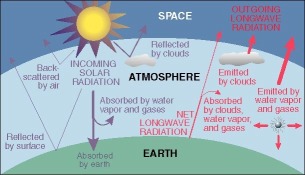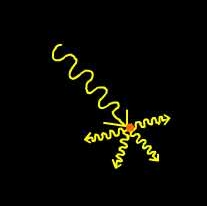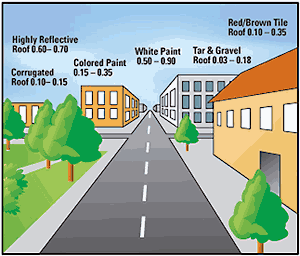Radiation and Energy Balance of the Earth SystemMost of the environmental processes acting near the surface of the Earth derive their energy from exchanges of heat between the Earth and the atmosphere above. Much of this heat comes from radiant energy initially provided by the absorption of solar radiation. The absorbed energy is used to warm the atmosphere, evaporate water, warm the subsurface along with a host of other processes. The Radiation BalanceThe radiation balance of the Earth system is an accounting of the incoming and outgoing components of radiation. These components are balanced over long time periods and over the Earth as whole. If they weren't the Earth would be continually cooling or warming. However, over a short period of time, radiant energy is unequally distributed over the Earth.
Shortwave radiationThe radiation balance of the Earth system is depicted in the Figure 4.18. (Shortwave radiation is colored purple and longwave radiation is in red.) Shortwave radiation from the Sun penetrates through space to the outer edge of the atmosphere unimpeded by the vacuum of outer space. Once solar radiation begins to penetrate through the atmosphere this amount begins to decrease due to absorption and reflection. About 30% of the available solar radiation at the top of the atmosphere is reflected or scattered back to space by particulates and clouds before it reaches the ground. The gases of the atmosphere are relatively poor absorbers of solar radiation, absorbing only about 20% of what is available at the outer edge of the atmosphere. The remaining solar radiation makes its way to surface as direct and diffuse solar radiation. Direct solar radiation (S) is shortwave radiation able to penetrate through the atmosphere without having been affected by constituents of the atmosphere in any way. Diffuse radiation (D) is shortwave radiation that has been scattered by gases in the atmosphere. Scattering is a process whereby a beam of radiation is broken down into many weaker rays redirected in other directions. Together, direct and diffuse shortwave radiation accounts for the total incoming solar radiation or insolation (K↓). In equation form:
A portion of the incoming solar radiation is absorbed by the surface and a portion is also reflected away. The proportion of light reflected from a surface is the albedo (a). Albedo values range from 0 for no reflection to 1 for complete reflection of light striking the surface. Albedo can be expressed as a percentage (albedo multiplied by 100) that for some is easier to understand. For instance, grass has an albedo of about .23. This means that of the incoming solar radiation that strikes the grass, 23% of it is reflected away. On the other hand, highly reflective surfaces like snow have an albedo upwards of .87, or 87% of sunlight is reflected away.
The amount of reflection (K↑) is given by the following equation: K↑ = (S+D)a The amount of reflection basically
depends on the color of the surface, darker surfaces
reflect less than lighter colored ones. For some
surfaces, like water, the sun angle affects albedo. If
you have been out on a lake during the day you might
have noticed that the sun reflects off the surface
more when the sun is lower in the sky than it does
when it is more directly overhead. Figure 4.20 Darker urban surface absorb more heat during the day causing the urban heat island effect. Net shortwave radiation is the difference between incoming and outgoing shortwave radiation expressed as: K*= (S+D) - (S+D)a During the day, K* is a positive value
as incoming always exceeds outgoing shortwave
radiation. At night, K* is equal to zero as the Sun is
below the horizon. (No, moonlight doesn't count!)
|
||||||||||||||||||


